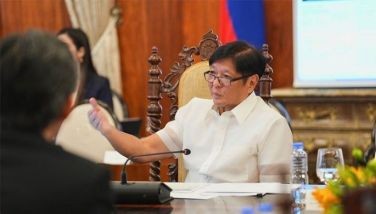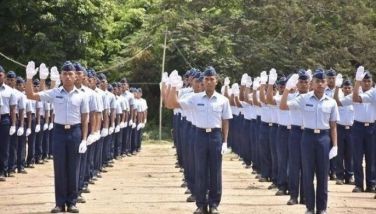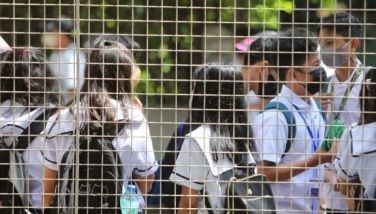YEARENDER Learning from Yolanda: Typhoon response better
MANILA, Philippines - The Philippines was not spared from powerful typhoons this year. But the government, particularly the state weather bureau, was able to respond better with improved communication and equipment.
Eighteen tropical cyclones, three of which were powerful typhoons, have entered the country this year, according to the Philippine Atmospheric, Geophysical and Astronomical Services Administration (PAGASA).
When many thought the year would end without another Yolanda-like disaster, Super Typhoon Ruby (international name Hagupit) struck the country early this month, leaving at least 11 people dead and almost P2 billion worth of damage to infrastructure and agriculture.
“Days before Ruby, which we forecast as another super typhoon, entered the country, we have warned the people (of its possible impact),” PAGASA deputy administrator for operations and services Landrico Dalida Jr. said.
“Our forecast for Ruby was spot on,” Dalida said. “Our reference is Super Typhoon Yolanda. We have several improvements in the agency, specifically in communication.”
Dalida said even before Ruby lashed the country, they had informed disaster managers of the possible devastation to be brought by the weather disturbance.
In August, Typhoon Glenda – the first typhoon to make landfall in the Philippines this year – showed how the state-of-the-art equipment and proper communication in the agency helped reduce casualties and damage to property.
“The Doppler radars really helped us a lot. We have accurately predicted the movement and location of Glenda. We even indicated the municipality where the eye is located,” PAGASA senior weather forecaster Rene Paciente said.
Glenda hit Albay and other parts of Southern Luzon, including Metro Manila, toppling trees as well as power and communication lines.
In September, Typhoon Luis pummeled Northern Luzon, causing widespread rains that boosted the southwest monsoon or habagat.
There were no casualties reported from Luis, according to the National Disaster Risk Reduction and Management Council (NDRRMC). But it left damage to agriculture and infrastructure, particularly in Isabela and Cagayan.
In the same month, Tropical Storm Mario damaged roads estimated at P100 million in Central Luzon, Cordillera Administrative Region and Ilocos region.
Yolanda experience
Dalida said aside from investing more on sophisticated weather forecasting facilities, the agency focused on the area of communications.
While the weather bureau was able to warn the public of Yolanda, several days before it hit Eastern Samar on Nov. 8, 2013, Dalida admitted the local government units and the public generally were not able to grasp the meaning of storm surges that killed more than 6,000 people.
“I can say that we have a better relationship with other agencies and the media. This helped us to relay our warnings to the public clearly and timely,” he said.
Dalida said the weather bureau aims to install more Doppler radars in the country to be able to monitor cyclones forming outside the Philippine area of responsibility.
- Latest
- Trending






























